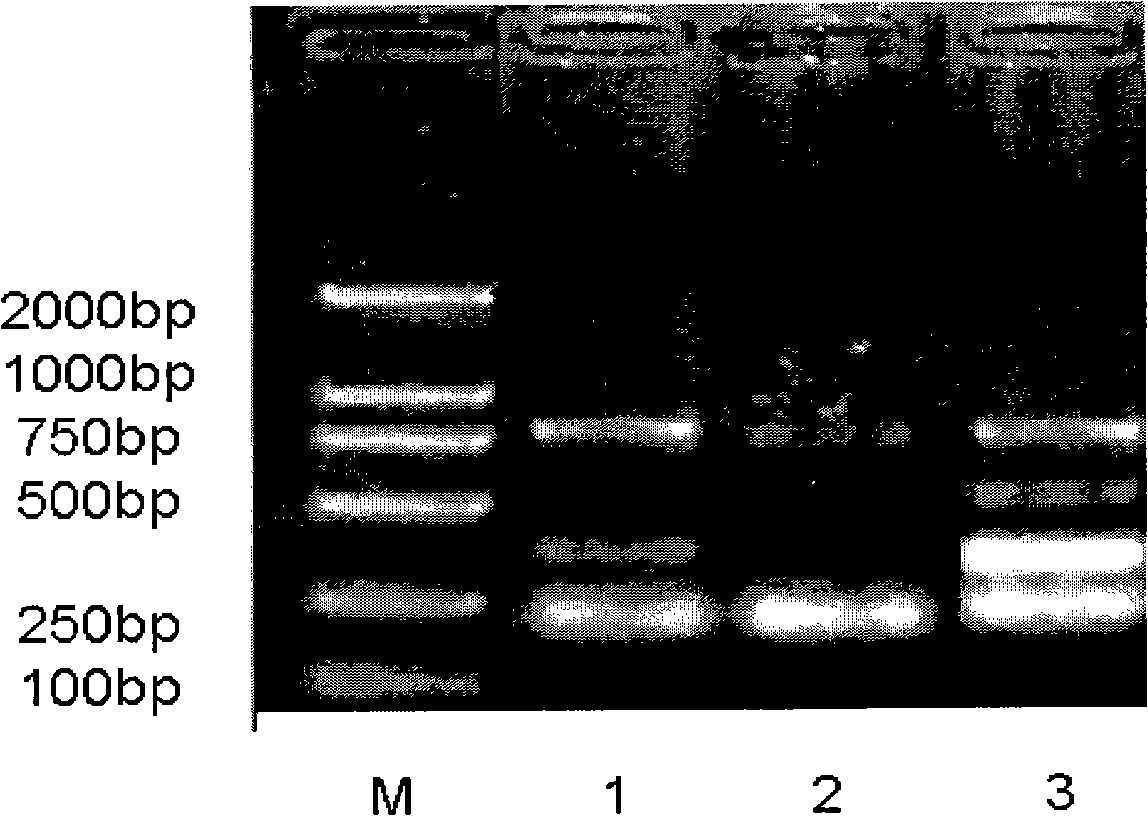Multiple PCR fast detecting method for oral cavity pathogen
A detection method and technology for pathogenic bacteria, applied in the field of molecular biology, can solve problems such as difficulty in selecting reaction conditions, and achieve the effects of consistent reaction conditions, improved speed and efficiency, and strong specificity
- Summary
- Abstract
- Description
- Claims
- Application Information
AI Technical Summary
Problems solved by technology
Method used
Image
Examples
Embodiment 1
[0041] A multiplex PCR rapid detection method for Actinobacillus actinomycetes, Bacteroides forsei, Fusobacterium nucleatum, and Porphyromonas gingivalis uses multiple polymerase chain reaction (PCR) to simultaneously detect Actinobacillus actinomycetes, Four pathogenic bacteria of Bacteroides forsei, Fusobacterium nucleatum and Porphyromonas gingivalis, the steps are as follows:
[0042](1) Collection of periodontal pocket and gingival sulcus specimens: samples were collected from the deepest part of the periodontal pocket of the patient or the gingival sulcus of healthy periodontal patients using the sterile paper tip method. Rinse with normal saline to remove food residues, blow dry, use cotton balls to prevent moisture, and sterilize the local area with 2.5% iodine tincture cotton balls, insert a piece of sterile paper tip into the periodontal pocket or gingival sulcus, stop inserting when there is resistance, and stay for 30 seconds Then take it out, put it in the convent...
PUM
 Login to View More
Login to View More Abstract
Description
Claims
Application Information
 Login to View More
Login to View More - R&D
- Intellectual Property
- Life Sciences
- Materials
- Tech Scout
- Unparalleled Data Quality
- Higher Quality Content
- 60% Fewer Hallucinations
Browse by: Latest US Patents, China's latest patents, Technical Efficacy Thesaurus, Application Domain, Technology Topic, Popular Technical Reports.
© 2025 PatSnap. All rights reserved.Legal|Privacy policy|Modern Slavery Act Transparency Statement|Sitemap|About US| Contact US: help@patsnap.com

